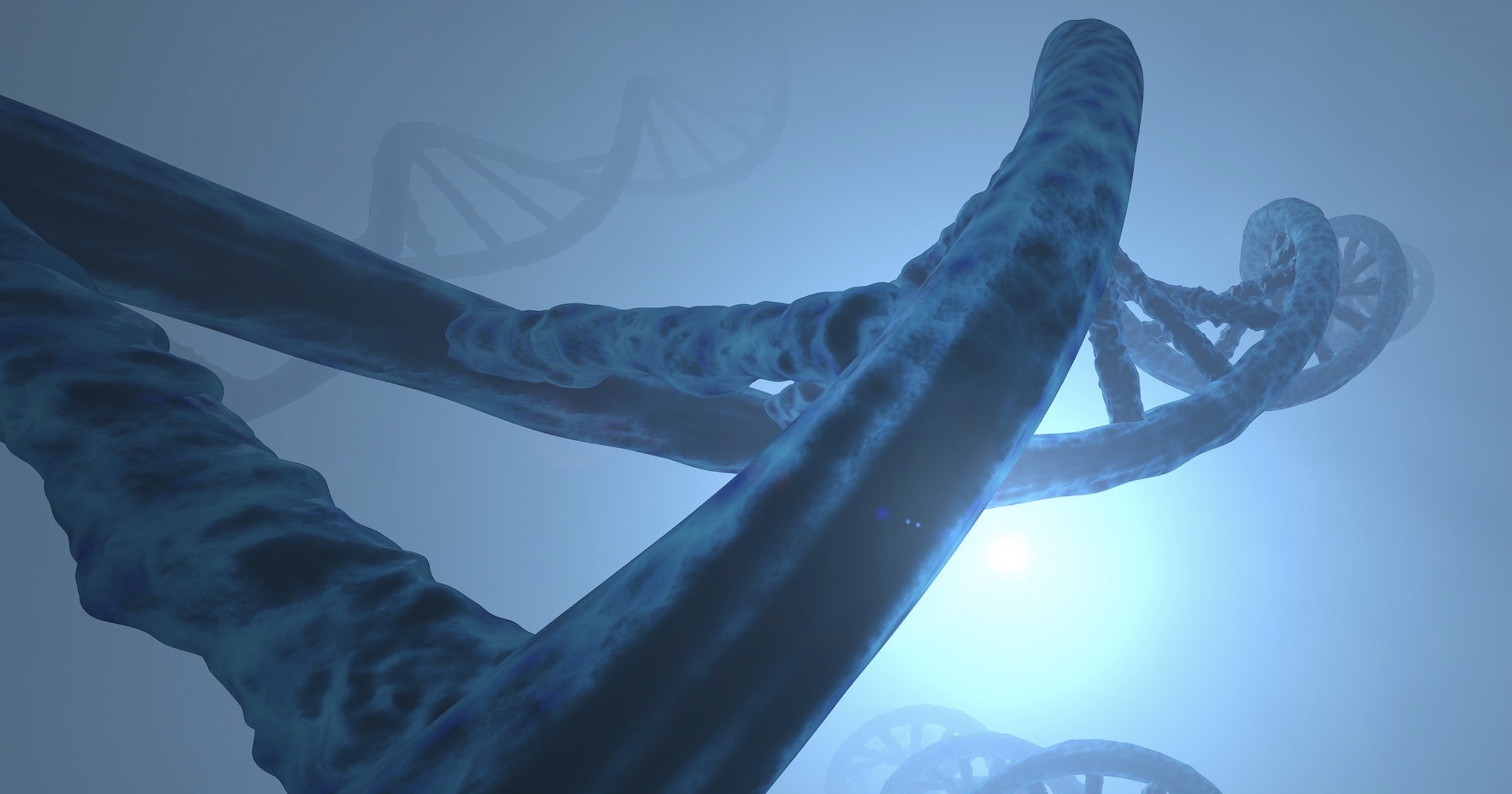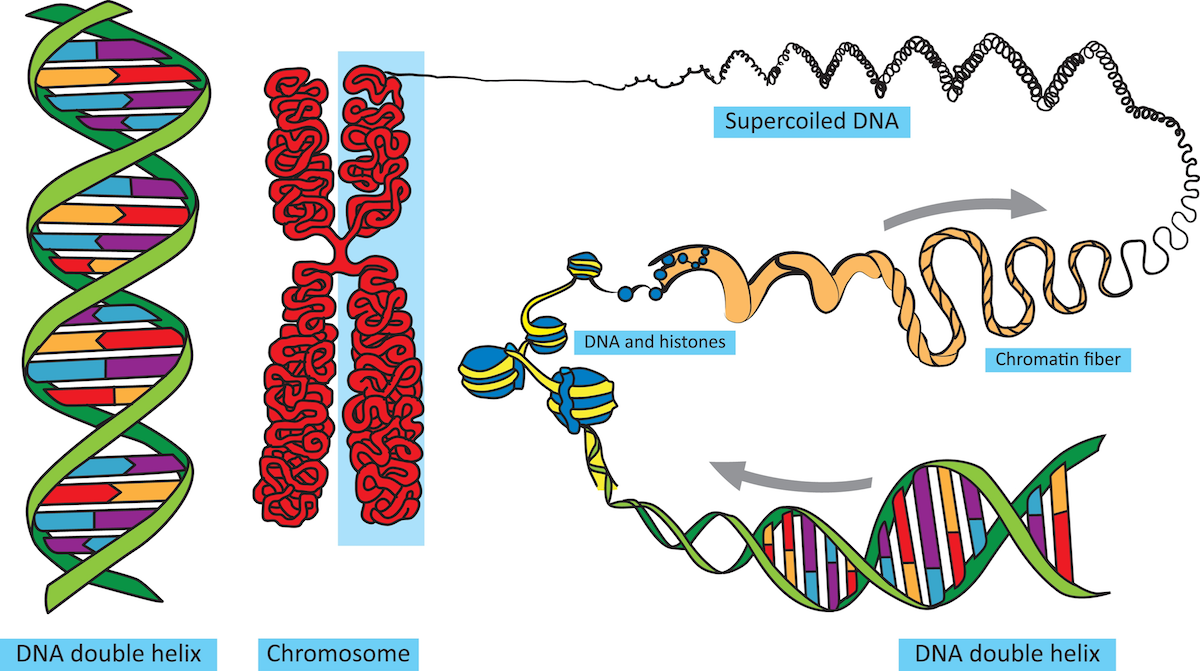 Evolution
Evolution
 Intelligent Design
Intelligent Design
Hierarchical Systems in Biology — DNA Packaging

Late last year Discovery Institute Research Coordinator Brian Miller asked me about hierarchical systems in biological organisms and how they relate to computer systems. I hadn’t thought much about it previously. However, that question has gnawed at me over the past few months and there are a couple of interesting cases I have been pondering where I believe there is hierarchical structure in nature that intersects with programmatic constructs.
The first is the overall organization of biological organisms: how they appear to have a layered approach where structures not only build on top of lower ones, but also within those layers there is composition of various parts that work in concert with other parts. For example, in any complex multicellular animal, cells comprise the smallest unit, then you have groupings of cells into structures such as organs, and then these organs are composed to give rise to the full, working organism. Beyond that, there is the thinking part of an organism that seems to defy being reduced to its physical constituents. I will stop there, but that is grist for a future post.
Hierarchical Nature of DNA
The second case I have been thinking about for some time, which is my subject here, is the hierarchical nature of the helical DNA molecule within the cell that carries the genetic instructions to build proteins that perform the work of the cell. It is truly remarkable to see 1) how such a large volume of information can be packed into so little space with its “supercoiled” architecture, 2) the degree to which this information is compressed and packaged within the nucleus of the cell, and 3) how it can be precisely unpackaged where needed to access the instructions for any new protein the cell needs for continued operation. As we will see, it is the chromosome that represents the highest order of DNA compression and organization, containing an organism’s entire genetic content, counted in the number of chromosome pairs. For example, humans have 23 chromosome pairs with one of each of the 23 pairs contributed by the parents, totaling 46 chromosomes.
Advanced life forms, such as humans, dogs, and whales, have what are called eukaryotic cells. Eukaryotic cells, unlike prokaryotic cells such as bacteria, contain a nucleus that stores and protects the genetic material, DNA, which is “condensed” (i.e., packaged) into chromosomes. To get an idea of just how condensed DNA is, inside each and every one of the 30 to 40 trillion cells (excluding bacteria and reproductive cells) that make up a human, if you were to stretch the 3 billion base pairs of DNA end to end, its length would be about two meters. Yet when fully packaged inside the nucleus of a cell (generally during cell division), the 3 billion base pairs in each cell fit into a space just 6 microns (.000006 meters) across. The nucleus itself is about 10 microns (.00001 meters) in diameter, providing ample room for DNA to be unpackaged as needed, as in between cell division chromosomes generally exist in a more diffused state in essential regions to enable faster access for replication or transcription. This is somewhat like the concept of memory caching in computer systems to speed up programs by avoiding slower disk reads for frequently used data. Generally, if a gene is completely packed away, then it will most likely not be expressed (i.e., transcribed and translated into a protein). This makes sense because each of the different cell types in an organism (e.g., muscle, skin, endothelial, nerve, etc.) requires only a small subset of the full set of available proteins coded in the genome.
Carefully and Ingeniously
So how do you package one meter of information content into a space 1/100,000 that size? Very carefully and quite ingeniously. The storage of DNA is very much like hierarchical file systems on Windows and Linux desktop computers compressed into a .zip file. In the same manner that there are folders within folders within folders in a desktop computer, with the actual files at the terminal level, individual genes within a DNA molecule are equivalent to “files” that in this case specify the building of a protein needed for the cell to function. DNA packaging is far more complex, however, with several levels of packaging into a highly compressed and compact structure called chromatin. Essentially, there are three orders of DNA packaging: the first order is the nucleosome, the second order is the solenoid fiber, and the third order is the scaffold loop chromatids chromosome. The diagram below demonstrates the levels of packaging.

The first level of packaging of DNA is where the double-stranded DNA is wrapped around spools of histone, a family of positively charged proteins that function primarily in packaging DNA, to form nucleosomes, creating the appearance of “beads” on a string. The nucleosomes themselves are then coiled into a 10 nm (10 billionths of a meter) fiber. Each nucleosome “core” consists of eight histone molecules. The nucleosomes are then further folded into the second order supercoiled solenoid fiber, which is 30 nm in width. The third order is the forming of looped domains of solenoid fibers that average 300 nm in width which are then further compressed down to 250 nm to form chromatin fiber. The chromatin fibers are further folded into 700 nm chromatids, and finally we have the highest order of structure that forms the characteristic shape of a chromosome which is 1400 nm in width as seen above. Thus, the general order of packaging is:
DNA → nucleosome → solenoid → chromatin fiber → chromatid → chromosome
A “Chicken and Egg” Problem
It is hard to fathom that such a highly complex, hierarchical mechanism of information storage on a microscopic scale could come about purely by chance, which more importantly demonstrates a clear case of the classic “chicken and egg” problem. This complex, highly orchestrated packaging model, coordinated by the machinery of enzymes (topoisomerases) and various types of histones that are proteins themselves coded in DNA, must have come prior to DNA and prior to the random variation mechanism of evolution itself. The DNA packaging model is programmed with the knowledge of what regions of the chromosome to keep tightly supercoiled and what regions to keep more loosely packed to aid in DNA transcription. Moreover, if a region needed for transcription is supercoiled, it will unwind that region and compensate for the unwinding with a compensating supercoil in a prior region. Thus, there is an astounding process of coordination taking place within the process of transcribing DNA.
Interestingly, there are companies that recognize the genius of DNA and its packaging model who are investigating using DNA molecules as a means of creating molecular-level archival data storage to solve the problem of an ever-increasing amount of digital data that is surpassing the amount of physical storage available using modern magnetic and optical media. For example, tech giant Microsoft is currently engaged in this research, noting the following on their website: “Using DNA to archive data is an attractive possibility because it is extremely dense (up to about 1 exabyte per cubic millimeter) and durable (half-life of over 500 years).” When one considers the fact that the world’s finest software engineers look to the DNA packaging topology to dramatically increase storage capability by orders of magnitude, it is reasonable to conclude that the packaging and processing of DNA is the product of a purposeful designer with a degree of engineering knowledge simply unmatched by humans.
